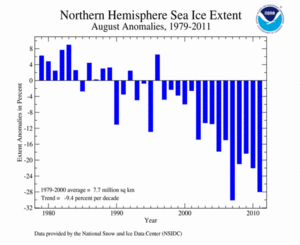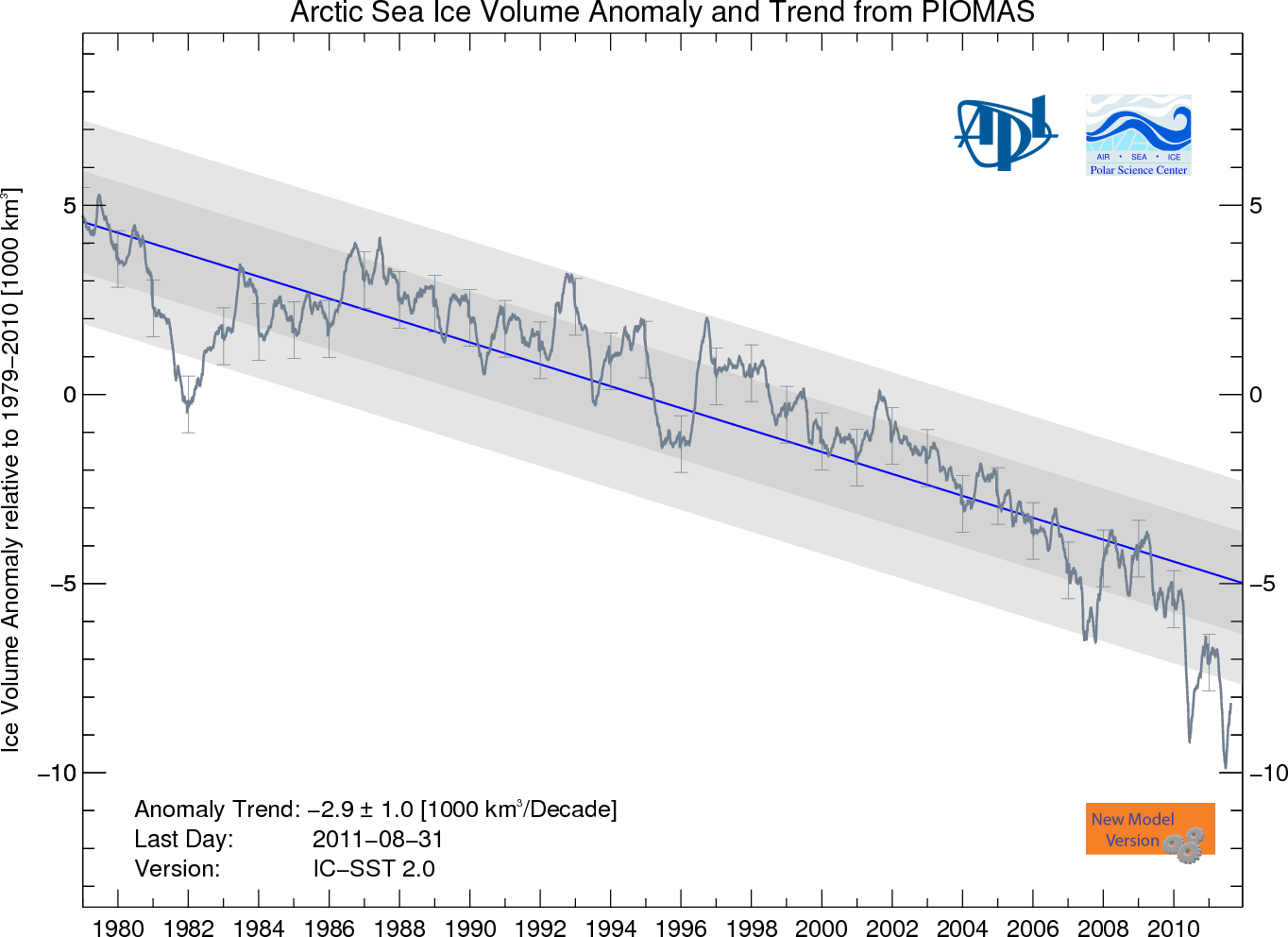Sea Ice Extent
According to the National Snow and Ice Data Center (NSIDC), the Northern Hemisphere sea ice extent — which is measured from passive microwave instruments onboard NOAA satellites — averaged for August 2011, was 5.52 million square kilometers (2.13 million square miles), 28.0 percent below the 1979-2000 average. This is the second smallest August Arctic sea ice extent since records began in 1979. The smallest August Arctic sea ice extent occurred in 2007, when the monthly average ice extent dropped to 5.32 million square kilometers (2.05 million square miles). August 2011 marks the 15th consecutive August and 123rd consecutive month with below average Arctic sea ice extent. August Arctic sea ice extent has decreased at an average rate of 9.4 percent per decade.
During August 2011, the Arctic sea ice continued its rapid melt. By mid-August both the Northwest Passage and the Northern Sea Route were ice free. This is only the second time in recorded history that both passages have been ice free, with the first occurrence in 2010. Throughout the monthly melting, the ice extent tracked near the record low extents of 2007. Most regions of the Arctic experienced below-average ice coverage during August, with the exception of the East Greenland Sea, where near-average ice coverage was observed.
When using Arctic sea ice extent to monitor the state of sea ice conditions across the Arctic, no information is given on the thickness of the ice. To compensate for this, the Polar Science Center at the University of Washington developed a modeled dataset to measure the volume of Arctic sea ice using the Pan-Arctic Ice Ocean Modeling and Assimilation System (PIOMAS). According to the product’s documentation — sea ice volume is an important climate indicator. It depends on both ice thickness and extent and therefore more directly tied to climate forcing than extent alone. According to this dataset, Arctic sea ice volume reached a record low during August 2011, dipping below the volume for the same period during 2010. For the month, the average ice volume for August 2011 was 5,000 cubic kilometers (1,200 cubic miles). This value is 62 percent lower than the mean over this period and 72 percent lower than the maximum in 1979. The averaging period used is the period of record — 1979-2010.
The August 2011 Southern Hemisphere sea ice extent was 0.08 percent above the 1979-2000 average. This is the 14th smallest (20th largest) August Southern Hemisphere sea ice extent on record. The August 2011 Antarctic sea ice extent was significantly smaller than the August 2010 extent, which was the largest on record at 4.08 percent above average. August Antarctic sea ice extent has increased at an average rate of 0.8 percent per decade, although there is considerable interannual variability.
For further information on the Northern and Southern Hemisphere snow and ice conditions, please visit the NSIDC News page.
 NOAA's National Centers for Environmental Information
NOAA's National Centers for Environmental Information


